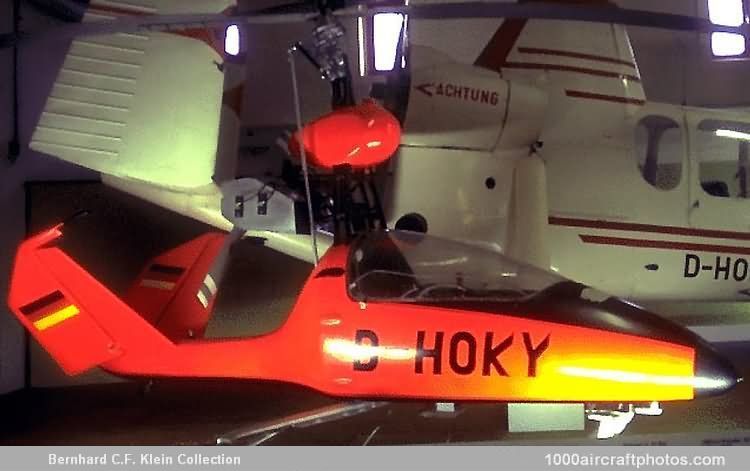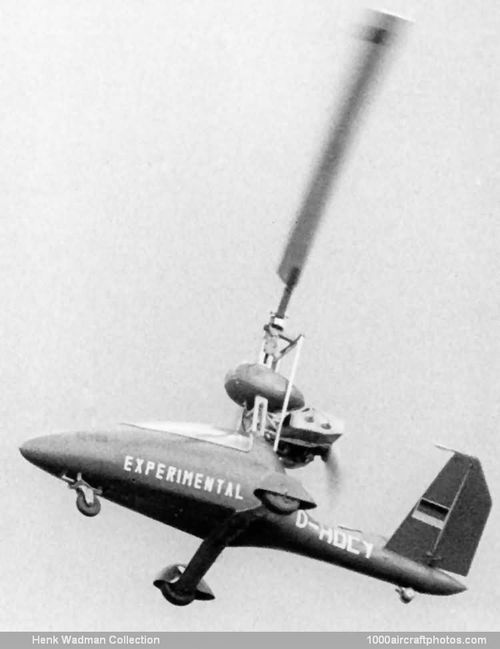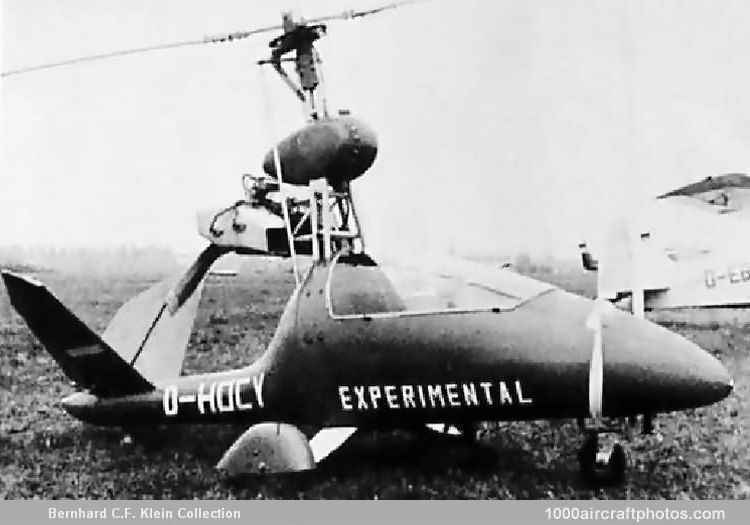BERNHARD C.F. KLEIN MEMORIAL COLLECTION
No. 7708. Krauss TRS 1 Hummel (D-HOCY c/n V-1)
04/30/2011. Remarks by
Johan Visschedijk: "With the assistance of Ing. Jürgen Kuntze and Ewald Sammet, Dipl.-Ing. Krauss, Technical Director of the Kornwestheim Fliegergruppe (Flying Group), near Stuttgart, Germany, completed and flew this small aircraft known as the TRS 1 (TRS = Tragschrauber, gyrocopter).
/ / / / / / / / / / / / / / / / / (
Henk Wadman Collection)
Design and construction was started in September 1966, and first flown in September 1967, the gyrocopter enchanted by its clean design and by the performance and handling proven in test flights. A
CofA in the Experimental class was awarded by the LBA (Luftfahrtbundesamt, Federal Aviation Office) on June 11, 1968
The aircraft was withdrawn from use in 1975 and donated to the Helicopter Museum at Bückeburg, where it was put on display with the shown fake registration D-HOKY."
Rotor system: Single two-blade all-metal main rotor, with Stan-Zee blades, on Bensen gimbal-type rotor head at top of centrally-located rotor pylon. Rotor could be tilted for fore-and-aft or sideways movement by stick control.
Fuselage: Streamlined monocoque pod-and-boom structure, of glass fiber sandwich construction with a balsa wood core.
Tail unit: V-shaped tail surfaces, for lateral control only. These surfaces were of glass fiber construction, carried on rear tail boom and consisted of tapered fixed fins and large balanced movable surfaces.
Landing gear: Non-retractable tricycle type, with additional wheel under tail. Glass fiber cantilever main legs and wheel fairings, the latter housed the bearings of the stub-axles for the main wheels. Main wheel tire size 4 x 4.00, pressure 35,6 lb/sq.in (2.5 kg/sq.cm). Independent brake on each main wheel. The small tail wheel, which was the first unit to touch down, had a telescopic shock-absorber.
Power plant: One 72 hp McCulloch 4318A four-cylinder two-stroke horizontally-opposed air-cooled engine, mounted on a steel-tube support frame and driving a two-blade propeller of Krauss's own design. Fuel in single main tank, centrally mounted on rotor pylon, with capacity of 5.3 gal (20 l).
Accommodation: Single semi-reclining glass fiber seat for pilot under one-piece molded Plexiglas canopy, which hinged sideways to starboard to provide access to cockpit.
Equipment: Cockpit instrumentation included altimeter, airspeed indicator, rate of climb indicator, rotor and engine rpm indicators, engine temperature indicator and VHF radio.



